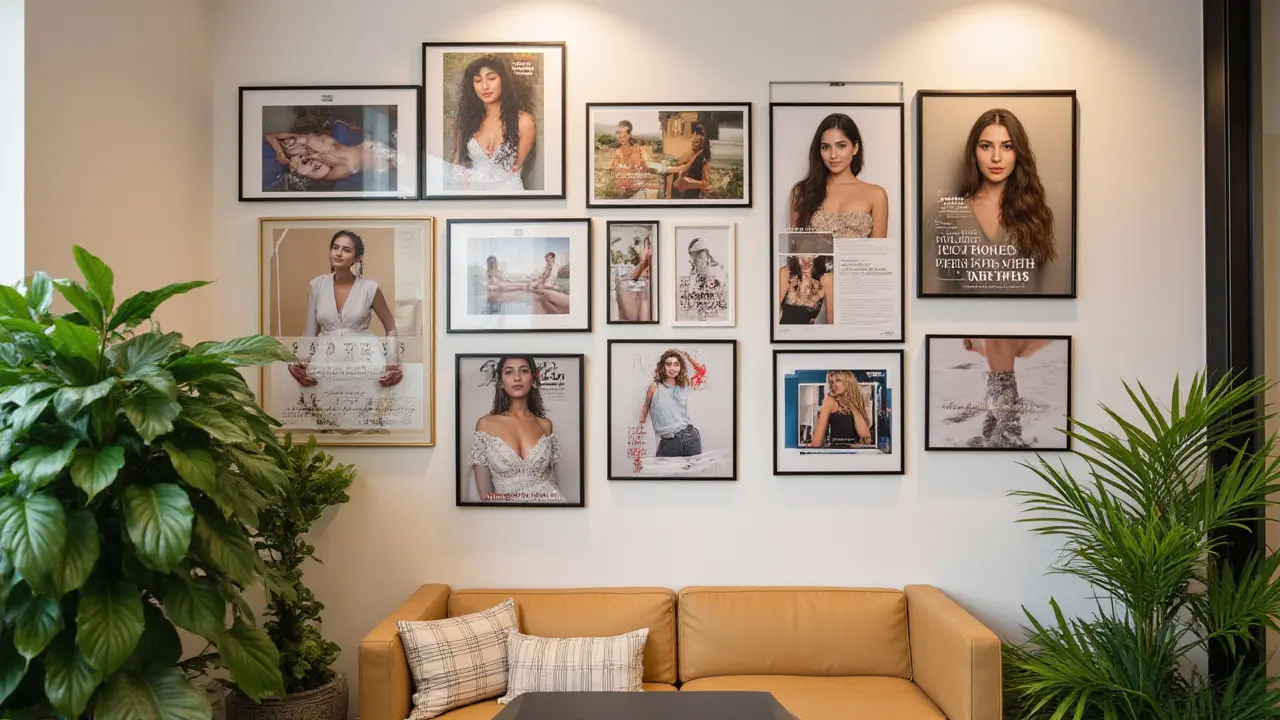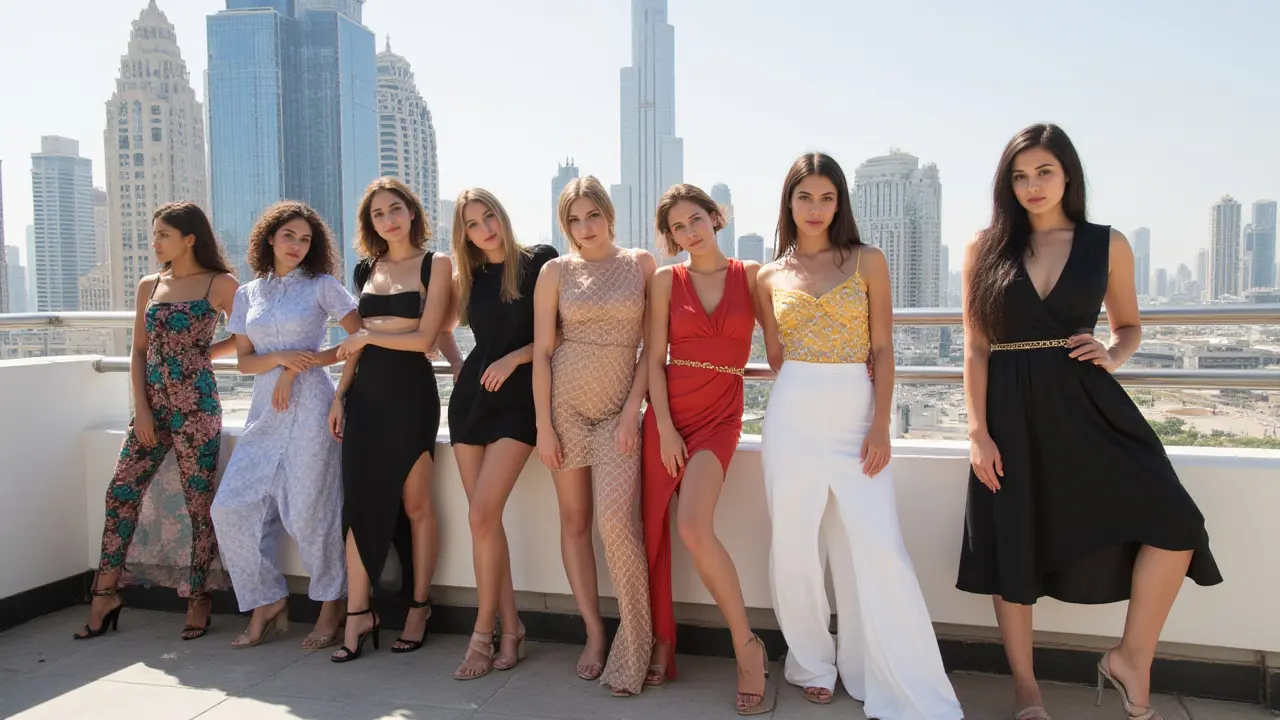Flip open any top fashion magazine, and you’ll notice tall models strutting down city streets, standing head and shoulders above everyone else. But here’s a question that gets asked in every modeling class, DM, and agency meet-and-greet: is 5'7" too short to model? That one single number—67 inches—can leave people feeling left out, especially if you’ve been dreaming of walking the runway but the tape measure just doesn’t stretch further. Stick with me, because the answer is way more interesting than most people think.
Understanding Height in the Modeling World: The Real Story
Height can be a hot topic in modeling circles. For decades, traditional fashion houses and agencies have shouted from the rooftops that runway models need to be at least 5'9" or even taller. They love tall lines, longer silhouettes, and a uniform look on the catwalk. If you check the websites of big names like IMG or Elite, you’ll see these requirements front and center, making it seem like 5'7" is the short end of the stick. But is the story really that simple?
You see, modeling isn’t just about runways and Paris fashion weeks. There’s a massive world outside high fashion. Commercial modeling, print ads, fitness, beauty, e-commerce, and social media campaigns are shaking up what’s considered the "ideal" model. Look at brands like Savage X Fenty—they celebrate every kind of body, height included, because people want to see themselves reflected in campaigns, not just skyscraper-tall supermodels.
But let’s keep it real: if your big dream is to walk main runways at global fashion weeks, being 5'7" can be a hurdle. Agencies do turn away talented people just because they don’t tick the height box. It’s not always fair, and it’s not always logical, but it happens. That said, there are famous exceptions. Kate Moss is just under 5'7" and still became a legend—she literally changed the game with her look and attitude. More recently, models like Devon Aoki at 5'5" have made big waves, blowing the doors off those old-school rules. The industry’s starting to respond to the demand for change, but it’s slow—sometimes painfully slow.
So, is 5'7" too short to model? The honest answer: not always. If you have a strong portfolio, a unique look, and the hustle to prove you belong, plenty of doors are open. Some might take more pushing than others, but being 5'7" isn’t a dead end. Sometimes, it just means your path isn’t the same as everyone else’s—and that’s not a bad thing at all.

Breaking Down the Barriers: Types of Modeling and Who Gets In
Let’s get into the nitty-gritty—because not all modeling gigs care that you aren’t super tall. If we break down modeling by type, you’ll see there’s room for just about anyone who has drive, personality, and knows how to work a camera.
High fashion modeling, especially runway, is the toughest crowd for folks under 5'9". The top designers and agencies have stuck to their “tall, thin, and striking” formula for decades. Milan, Paris, London, and New York fashion shows pay top dollar and offer huge exposure, but they’re also the hardest places for shorter models to get in. Still, every rule has loopholes, especially if you’ve got a killer look.
Switch gears and check out commercial modeling. This is where things open up. Think about ads on buses, magazine covers, TV commercials, local brands, online clothing shops, or anything you see on a billboard that isn't high-concept fashion. Here, normal is in. Brands want relatable faces—and relatable often means not 6 feet tall. Check out the campaigns for American Eagle, Target, or body-positive brands like Aerie, who aim for all heights, all bodies, and real smiles.
Fitness modeling, swimsuit gigs, and beauty ads? Height isn’t the main ticket in. Big names like Paige Hathaway have made careers in fitness modeling standing at 5'7" or below. The same goes for parts work—think hands, feet, or hair modeling. You could also find success in niche areas like cosplay, social media influencing, or becoming the next viral face for a small designer starting out on Instagram.
Then there’s the world of plus-size modeling, which has come a long way. Models like Ashley Graham have not only thrown away strict body-size standards, they’ve also encouraged conversation about height flexibility. You’ll see more petite plus-size models being booked, especially for editorial or catalog work.
And don’t overlook international markets. Asian and Latin American agencies often have more relaxed standards, signing talent who wouldn't make the cut in New York or Milan. You could find success in Tokyo, where height requirements for women can be as low as 5'4", or carve a unique space in European commercial modeling where personality sells.
Is social media your thing? TikTok, YouTube, and Instagram have completely rewritten the rules. Some of the most successful brand ambassadors—earning more than big-name models—are well under industry “ideal” height. Their followers care more about personality, style, and creative content than the numbers on a tape measure.
If you’re weighing your chances as a 5'7" model, step back and think about what sort of modeling truly excites you. High fashion has its standards, but those standards are being challenged every day by talents who don’t fit the traditional mold.

Making It Work: How To Succeed As a 5'7" Model
Getting real: the industry wasn’t built with 5'7" models in mind, so you’ll need to get creative, persistent, and a little unconventional. Here’s how you up your chances and get noticed.
First things first, crush your portfolio. Let your personality shine through, capture your best angles, and don’t hide your height—own it. A well-done shoot will show casting agents that you photograph taller than you are, and that’s gold. Photographers who know lighting and posing tricks can help “add” a couple of inches visually. Practice posture, find the right shoes, and play with angles. Famous stylists use trick belts, clever hem lines, and even hair volume to add height to a look, and if you’re modeling, you learn to borrow these tricks fast.
Networking is everything. Agencies love models with the right look and attitude. Attend casting calls, reach out to mid-sized agencies (they’re sometimes more flexible), and build relationships with stylists, makeup artists, and photographers. Word of mouth from industry insiders sometimes counts more than your stats on paper.
Social media might sound cliché, but it’s where agencies shop for new faces. Tag agencies like IMG or Ford on Instagram, use popular modeling hashtags (#shortmodel, #petitemodel)—just don’t downplay your height. Transparency actually makes you more relatable.
Choose agencies with open height policies. There are boutique agencies (like We Speak in New York) that cater to diverse faces and bodies. Keep an eye on casting calls for brands known to break the mold. If you’re a guy, you’ll find some doors open at 5’11” and up, but even then, the barriers are weakening.
Here’s a secret industry tip: bring energy to your shoots. Agencies will look past height if your attitude, professionalism, and versatility stand out. If you’re comfortable and confident, that’ll shine on camera and override an inch or two. It’s not just about looking pretty—it’s about bringing a brand’s vibe to life.
Consider the markets where your height fits better: Tokyo, some parts of Latin America, and catalog work in Europe. Submit digital shots to smaller international agencies or look for specialized divisions within big agencies (like petite or commercial branches). Sometimes, smaller markets or online-only retailers are the space where you really shine and make the big money.
Know your rights and set your boundaries. Sometimes, agencies try to fit all models into a narrow box. If you’re told “no” just because of height, remember—other doors will open. Model Alliances and unions are pushing for fair representation and changing how agencies recruit. Progress is slow, but every story of a shorter model breaking through chips away at those old-school walls.
At the end of the day, your height is a number. What matters is how you use what you’ve got. Stand tall at 5'7", learn the business, rock your strengths, and don’t let a measuring tape stop your hustle. Fashion’s changing. There’s no one path or model build anymore—so why not make your own rulebook?
